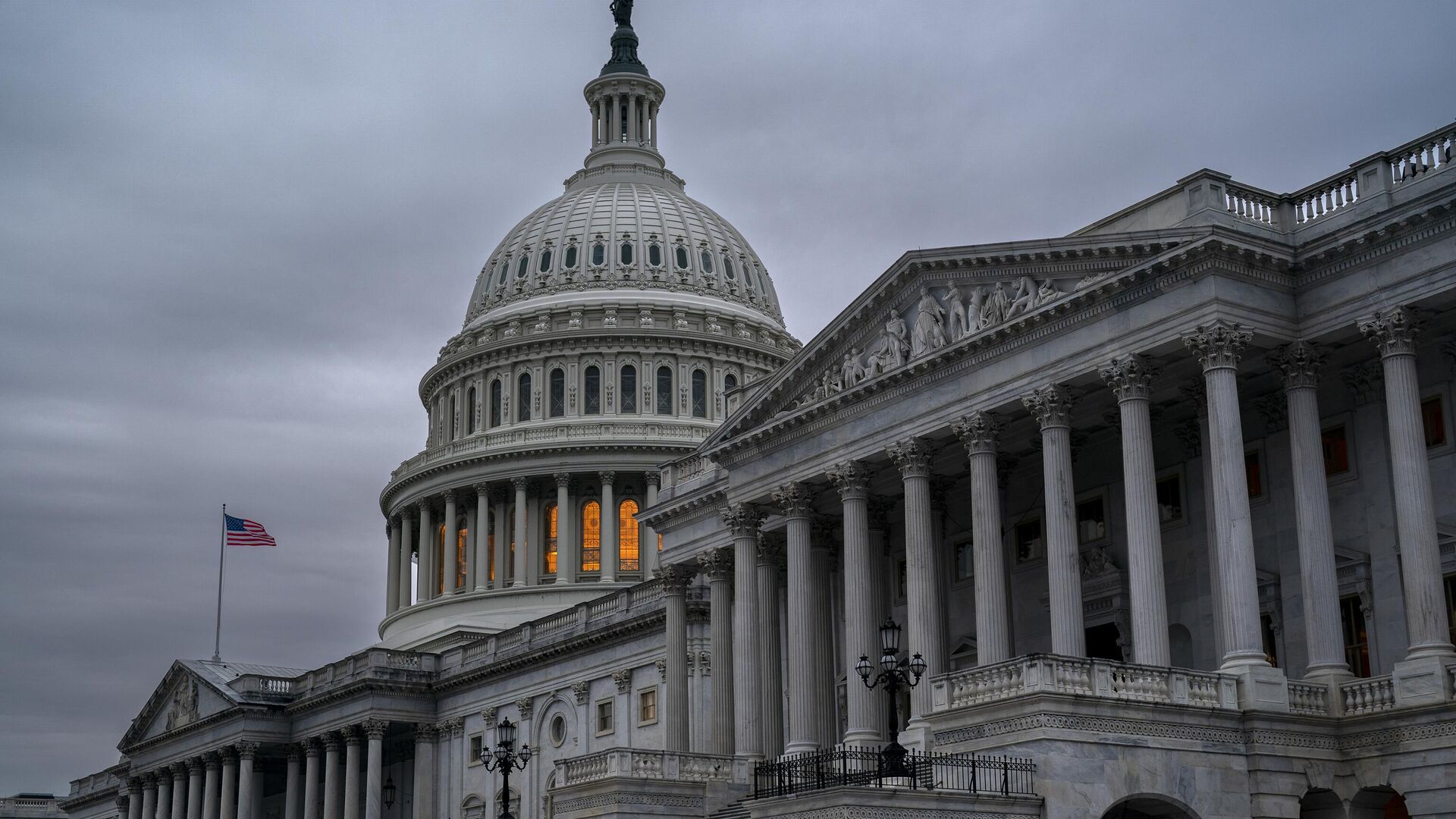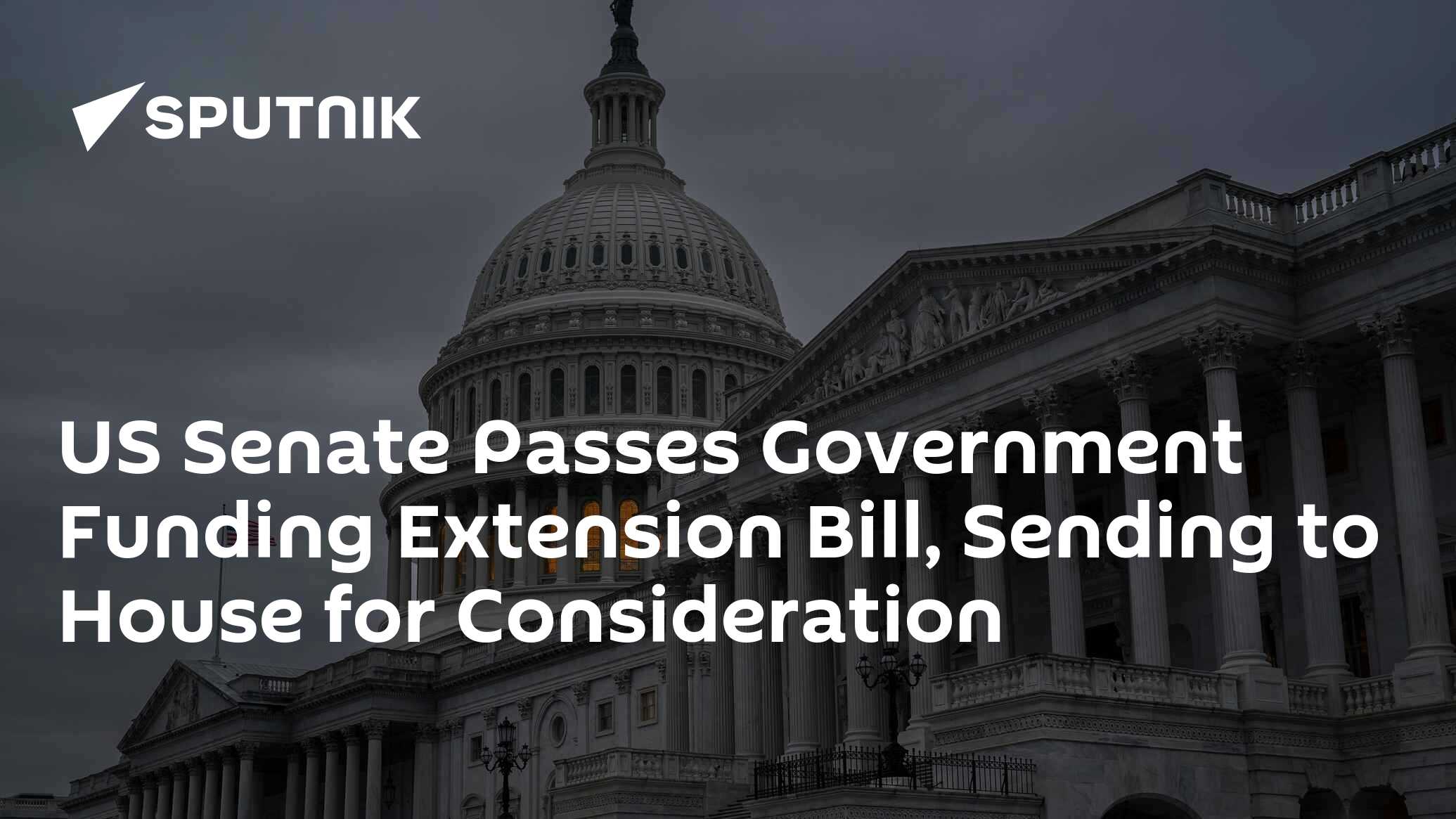US Senate approves government funding extension after failing to reach a consensus on the initial budget proposal. This unexpected turn of events highlights the deep partisan divisions within the Senate and underscores the precariousness of the nation’s fiscal planning. The short-term extension, while averting an immediate government shutdown, merely postpones the inevitable need for a comprehensive budget agreement, leaving many crucial government programs and agencies in a state of uncertainty.
The US Senate finally approved a government funding extension after a near-shutdown, a relief for many. The political maneuvering, however, pales in comparison to the excitement surrounding this weekend’s NFL matchup; you can check out the Ravens vs. Steelers odds, line, spread, time: 2024 NFL Week 17 to see who the betting experts favor. Regardless of the game’s outcome, the Senate’s action ensures continued government operations, at least for now.
The initial failure to pass the budget stemmed from significant disagreements over spending levels across various departments. Republican senators advocated for substantial cuts, citing concerns about the national debt, while Democrats pushed for increased investments in social programs and infrastructure. These contrasting viewpoints created a deadlock, threatening a government shutdown with potentially far-reaching consequences for the economy and public services.
The ensuing political maneuvering, characterized by intense negotiations and behind-the-scenes compromises, ultimately led to the temporary funding extension.
The US Senate’s Government Funding Extension: A Deep Dive
The US Senate’s recent approval of a short-term government funding extension followed a period of intense political maneuvering and disagreement. The failure to pass the initial funding bill highlighted deep divisions within Congress regarding budgetary priorities and spending levels. This analysis delves into the context of the funding extension failure, examines the short-term solution, assesses its impact on government agencies and public opinion, and explores potential future scenarios.
The Context of the Funding Extension Failure
The political climate leading up to the Senate’s failure to pass the initial funding bill was characterized by significant partisan gridlock. Republicans and Democrats held starkly contrasting views on spending levels, with Republicans advocating for tighter fiscal control and Democrats pushing for increased investment in social programs and infrastructure. Key players included Senate Majority Leader [Name], Senate Minority Leader [Name], and key committee chairs from both parties.
Their stated positions often reflected the broader ideological divides within their respective parties. Specific sticking points included disagreements over defense spending, domestic programs, and the overall budget deficit. The potential consequences of a government shutdown included furloughs for federal employees, disruptions to essential government services, and a potential negative impact on the national economy.
The US Senate finally approved a government funding extension after a series of failed attempts, averting a potential shutdown. This political maneuvering contrasts sharply with the immediate future facing college football teams, as seen in the article, 2024-25 College Football Playoff: What’s next for the eliminated , which details the challenges for teams after playoff elimination. The Senate’s decision, while significant, pales in comparison to the intense pressure faced by athletes and coaches navigating the post-season landscape.
| Faction | Key Demands | Leadership | Strategic Approach |
|---|---|---|---|
| Republican Conservatives | Reduced spending across the board, emphasis on fiscal responsibility. | [Example: Senator X] | Strong opposition to increased spending, potential for filibusters. |
| Moderate Republicans | Negotiated compromise, balancing fiscal concerns with essential government functions. | [Example: Senator Y] | Seeking bipartisan solutions, willing to compromise on certain issues. |
| Progressive Democrats | Increased funding for social programs, climate initiatives, and infrastructure. | [Example: Senator Z] | Advocating for increased investment in social programs, potentially willing to compromise on other areas. |
| Moderate Democrats | Balanced approach, prioritizing key government functions while seeking compromises on spending levels. | [Example: Senator W] | Seeking bipartisan consensus, focusing on finding common ground. |
The Short-Term Funding Extension
The short-term extension, lasting [Number] weeks, provided temporary funding for essential government operations. It avoided a government shutdown, but did not resolve the underlying budgetary disagreements. The extension was the result of intense negotiations and compromises between the two parties, primarily driven by the need to prevent a potentially damaging government shutdown. This temporary solution significantly hampered long-term budget planning, forcing Congress to revisit the issue in a short timeframe.
This extension mirrors previous instances of short-term funding measures, which have become increasingly common in recent years, reflecting the growing political polarization and difficulty in reaching bipartisan consensus.
A timeline of key events includes: [Date] – Initial funding bill introduced; [Date] – Bill fails to pass the Senate; [Date] – Negotiations begin on a short-term extension; [Date] – Short-term extension passed.
Impact on Government Agencies and Programs

The short-term extension had immediate impacts on various government agencies. The uncertainty surrounding the budget created disruptions in planning and operations. Ongoing projects faced potential delays or cancellations, and some agencies had to adjust staffing levels.
- Defense Department: Potential delays in procurement contracts and military exercises.
- Department of Health and Human Services: Potential disruptions in the delivery of health care services.
- Department of Transportation: Potential delays in infrastructure projects.
- Environmental Protection Agency: Potential limitations on environmental monitoring and enforcement activities.
Public Opinion and Reaction, US Senate approves government funding extension after failing to

Public sentiment regarding the government’s handling of the budget process was largely negative, with many expressing frustration over the political gridlock and the lack of progress. Media coverage focused on the potential consequences of a government shutdown and the implications for various government programs. Different perspectives emerged, with some praising the short-term extension as a necessary compromise and others criticizing it as a sign of governmental dysfunction.
Public demonstrations occurred, with participants holding signs reflecting their concerns about the budget impasse and expressing their views on specific issues. For instance, a demonstration outside the Capitol Building might show people wearing red hats and carrying signs reading “Fund our schools,” “Protect Social Security,” and “No more shutdowns,” showcasing the diversity of opinions and the passionate feelings involved.
The overall atmosphere was likely one of frustration and anxiety.
Potential Future Scenarios

If a compromise isn’t reached before the short-term extension expires, a government shutdown remains a possibility. Possible strategies for resolving the budget impasse include bipartisan negotiations, compromises on spending levels, and the potential use of budget reconciliation procedures. Different potential legislative outcomes range from a comprehensive budget agreement to further short-term extensions. The long-term effects of the current situation could include increased national debt, damage to the national economy, and further erosion of public trust in government.
In a potential future scenario where the budget is successfully passed, key compromises might include moderate reductions in spending across various departments, increased funding for specific priority programs through bipartisan agreement, and the implementation of mechanisms to prevent future budget impasses.
The Senate’s approval of a short-term government funding extension represents a temporary reprieve from a potential government shutdown, but the underlying issues that caused the initial impasse remain unresolved. This temporary fix only delays the difficult decisions needed to craft a sustainable long-term budget. The coming weeks will be crucial in determining whether lawmakers can bridge their differences and prevent a future crisis.
The success of these efforts will significantly impact not only the stability of the government but also public trust in the legislative process. Failure to reach a lasting agreement will likely lead to further political gridlock and uncertainty, potentially harming the nation’s economic prospects and public confidence.
FAQ Insights: US Senate Approves Government Funding Extension After Failing To
What are the potential long-term consequences of relying on short-term funding extensions?
Continued reliance on short-term extensions can lead to instability in government operations, hindering long-term planning and potentially harming the economy through uncertainty.
How does public opinion influence the budget negotiations?
Public opinion, as expressed through polls, media coverage, and public demonstrations, can exert pressure on lawmakers to find common ground and avoid actions that are unpopular.
What specific programs or agencies are most vulnerable during budget uncertainty?
Agencies and programs with discretionary funding are often most vulnerable, as their budgets can be more easily affected by short-term funding extensions and political disagreements.
What historical precedents exist for similar budget impasses?
Numerous instances of government shutdowns and near-shutdowns have occurred throughout US history, often reflecting similar partisan divisions and budgetary disagreements.
